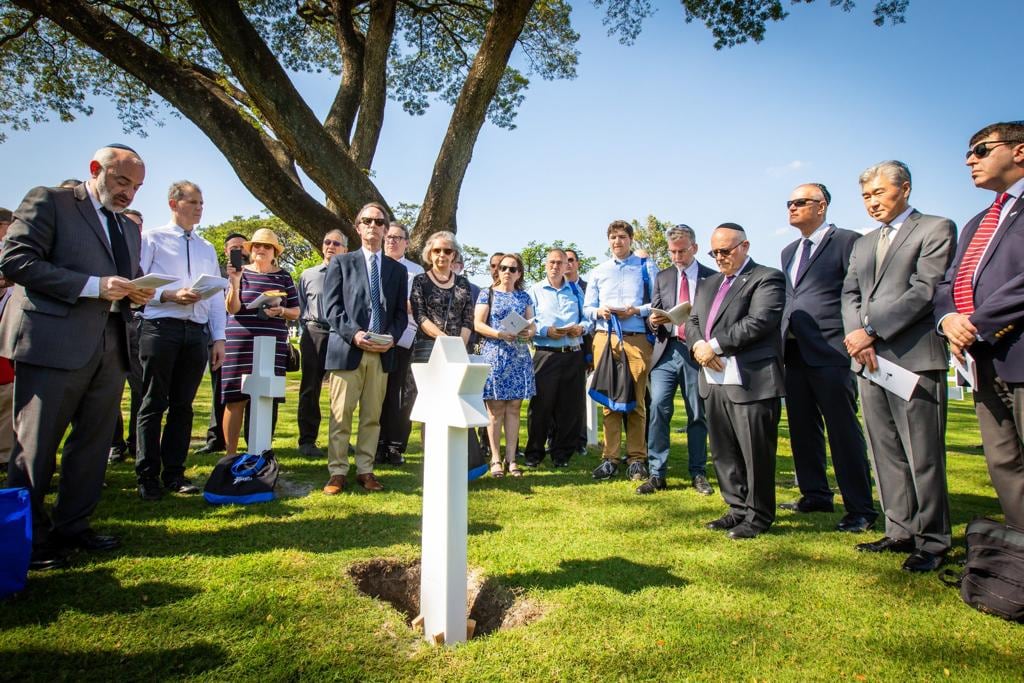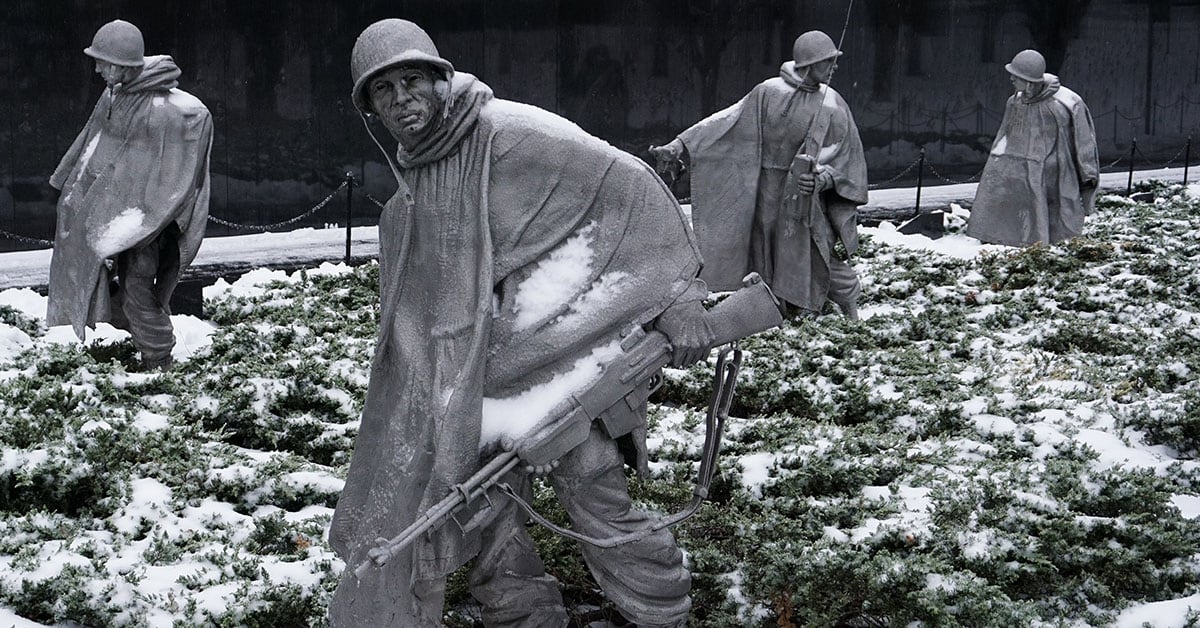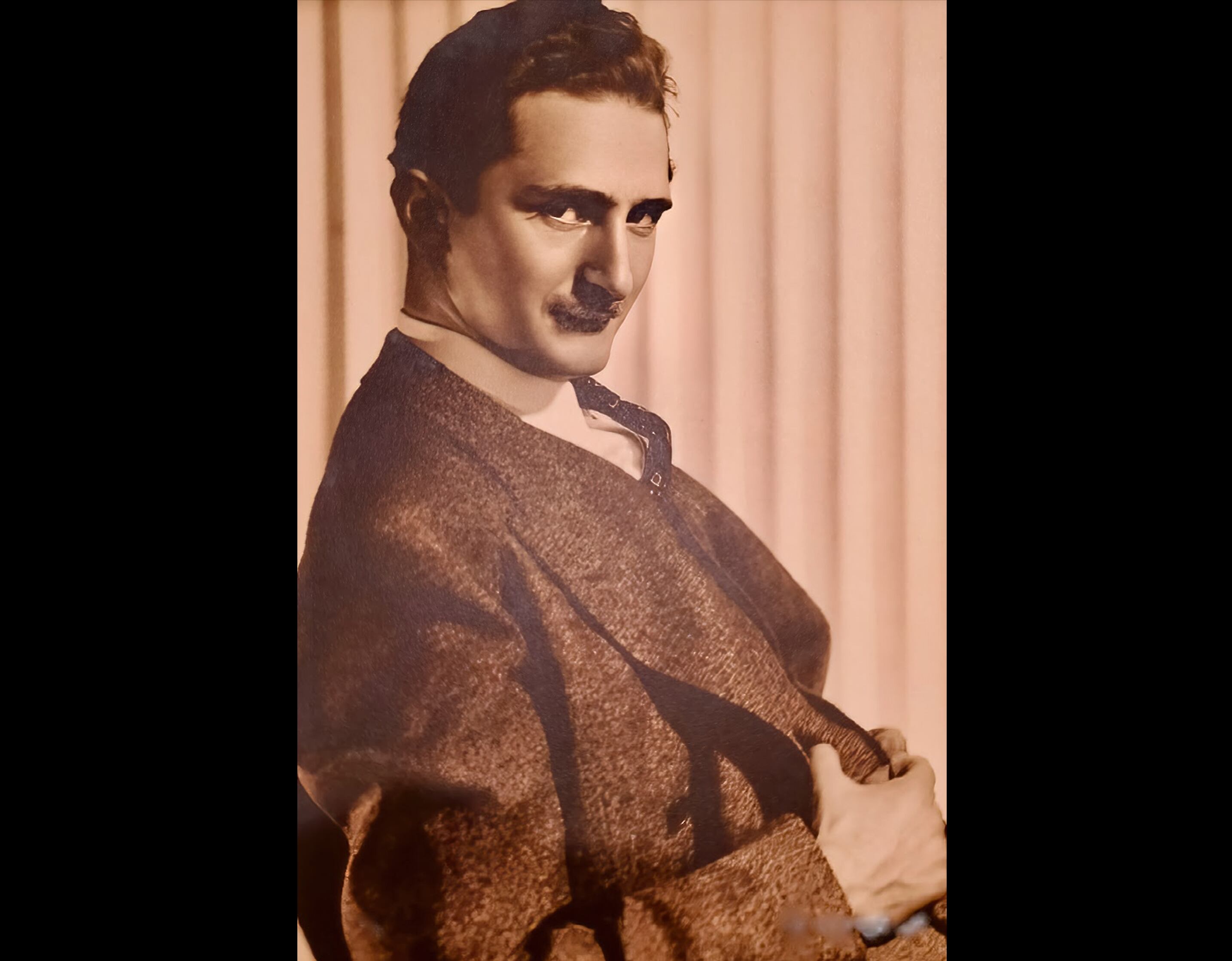Visitors to American World War II cemeteries in Europe often find themselves awestruck at the seemingly endless rows of crosses, each marking the final resting place of a U.S. service member who died while trying to liberate the western part of the continent from Nazi German occupation.
But those crosses inspired a question for a friend of Shalom Lamm, a retired entrepreneur who leads Operation Benjamin — a non-profit dedicated to ensuring that Jewish soldiers who are buried overseas have grave markers that reflect their faith.
Lamm was talking with Rabbi Jacob Schacter, now the organization’s treasurer, in 2014, when Schacter recounted a trip to the Normandy American Cemetery in France. The rabbi suspected that there were too few Stars of David among the crosses.
The CEO “ran home” that night and “counted the photographs” that Schacter had brought from the cemetery, reaching the same conclusion.
Lamm told Army Times in a phone interview that he “could not sleep,” consumed with a question: “Where are the missing Jews?”
Since then, Lamm, Schacter and others have banded together to identify Jewish-American troops who are mistakenly buried under the Christian cross.
They successfully lobbied the American Battle Monuments Commission to correct the marker for Pvt. Benjamin Garadetsky at Normandy in 2018. Lamm and his team have replaced 11 more since, including troops resting in the Philippines.

And Wednesday and Thursday, seven more Jewish-American troops buried in cemeteries across France, Belgium and Luxembourg will have their markers replaced with Stars of David:
- Pvt. Marvin F. Ashkenas of Bloomfield, N.J., who was killed in action Oct. 3, 1944, in France. His ID tags were lost when he was killed, according to an Operation Benjamin release, and his widow didn’t answer letters inquiring about his religion.
- Pvt. Albert Belmont, of Syracuse, N.Y., who was killed in action Nov. 30, 1944, in France.
- 2nd Lt. Howard U. Feldman of Allentown, Pa., was a B-17 bomber navigator who died when his plane was shot down over then-Czechoslovakia April 25, 1945. His religion was erroneously listed as Catholic.
- Maj. Maxwell Jerome Papurt, who lived in Brooklyn, was an Office of Strategic Services counterintelligence officer who was wounded and captured in 1944. He died Nov. 29 of that year when a friendly bombing raid destroyed the POW camp where he was held — because he had hidden his Jewish faith, he was buried under a cross.
- 2nd Lt. Kenneth E. Robinson was an airman from Cleveland who died when his B-17 bomber went down Aug. 17, 1943, during a massive daylight raid targeting a ball bearing factory in Schweinfurt, Germany.
- Tech. 5th Grade Everett N. Seixas, Jr., of New York, died during the Battle of the Bulge Dec. 27, 1944, while serving with the 80th Infantry Division. Seixas was listed as Protestant in War Department records for unknown reasons, despite his family lineage including influential Jewish-American faith leaders.
- 1st Lt. Joseph M. Sugarman, Jr., of Memphis, Tenn., a bomber pilot who died when his plane was shot down March 11, 1945, near Hamburg.
Why were some Jews buried under crosses?
Lamm’s group has a number of theories on why some troops didn’t have their faith adequately represented at their gravesites.

One, Lamm said, is simple administrative error — mistakes happened during the pre-Internet era, as they do today, and it was more difficult back then to find genealogical information to assist in correcting the errors.
That’s what happened with Ashkenas, whose remains were also difficult to identify.
For some of the troops, the grave markers may be an unintended consequence of a survival strategy.
During World War II, all U.S. troops had reason to fear falling into Nazi captivity — but some did more than others. Many American Jews who fought their way through France and into Belgium and Germany were painfully aware that they could face summary execution or worse if captured.
RELATED

That led some Jewish-American troops to deface their dog tags in an effort to hide their religion if captured. Others simply said they were Christians when they first joined the military, hoping to avoid the issue altogether.
Operation Benjamin says at least one of the seven whose headstones will soon be replaced, Sugarman, did that. So did Albert Belmont, according to his daughter.
What it means to families
For Barbara Belmont, who will be in attendance when her father Albert has his cross replaced with a Star of David this week, the ceremony represents the culmination of a lifelong effort to discover her father.
“This, to me, will almost be like being at his funeral,” Barbara told Army Times in a phone interview. “[The ceremony has] a meaning of contact; it’s meaning I can do something for him.”

“I was barely three [years old] when he was killed,” she explained. Her mother remarried and moved from Kansas City to St. Louis, and the family didn’t discuss Albert ever.
The war’s impact didn’t end with Albert’s death, which “changed everything.” Her stepfather hid his combat service — and what Barbara now considers PTSD — from the family, too.
Since she first saw a photo of Albert when she was 13, Barbara explained, she’s “always been searching [for him], because I wanted to know him and all about him.” Family stories from her dying maternal grandmother a few years later depicted a generous, loving man, only intensifying her desire to find him.
Life stymied her efforts for decades, she admitted. She was able to take her daughters to Albert’s grave in 1992, where she found him buried under a cross.
She didn’t know what to think at the time. She wasn’t sure how religious he’d been, and she “just didn’t move forward with” requesting a marker change. But she was struck by a “strange” lack of Jewish grave markers.
Then in 1994, she received a cold call from a cousin from Albert’s side of the family and was introduced to a world she’d never known. She also learned of her father’s philanthropy, and how he supported both secular and Jewish causes.
“[In] my father’s family, there were six boys and one girl. The oldest fought in the Spanish Civil War, and then the rest of them all fought in World War II,” she proudly recounted.
Barbara also learned from one of Albert’s brothers that “my father...put Protestant down” on his enlistment paperwork because he feared that if he “were captured...[he] would be shot immediately by the German troops.”
But the marker replacement stayed on the back burner until she heard from Operation Benjamin in recent years. They found her father’s name on the rolls of a “Jewish board” in St. Louis that collected the names of local Jews who were headed overseas to fight.
Barbara said it’s “wonderful” that groups like Lamm’s are working to correct the record for “men of the Jewish faith that are lying under a tombstone that does not represent their religious faith.”
She hopes the work continues — and that more people come to know their ancestors in a new way through the process, just like she did.
“I just grew up in a vacuum. I didn’t know [about his Jewish community involvement], but I do now,” Barbara explained. “It was important to him, and so I feel very good about this.”
Davis Winkie covers the Army for Military Times. He studied history at Vanderbilt and UNC-Chapel Hill, and served five years in the Army Guard. His investigations earned the Society of Professional Journalists' 2023 Sunshine Award and consecutive Military Reporters and Editors honors, among others. Davis was also a 2022 Livingston Awards finalist.





